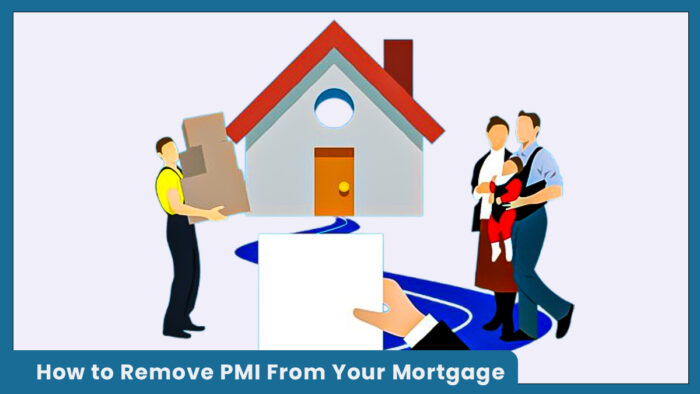How to Remove PMI From Your Mortgage – To remove PMI from your mortgage, you must have at least reached 20% equity in your home. Private Mortgage Insurance adds to your monthly mortgage payment, but it doesn’t last forever. You can request to have it removed, or you can wait for when it automatically drops off.

To speed things up, you can make extra payments toward your loan’s principal to reach that 20% equity faster. Another option is to get a home appraisal; if your property has increased in value, you might already qualify to drop PMI. And if you’re considering adjusting your loan terms anyway, refinancing can be a smart move to not only remove PMI but also possibly lower your interest rate or change your repayment schedule. So, if you are thinking of removing PMI from your mortgage insurance, this article provides a careful and well-explained way to go about it.
What is Private Mortgage Insurance (PMI)
When buying your new home through a mortgage, mortgage lenders request that you make a payment of at least 20% of the home cost. But, if you put down less than 20%, mortgage lenders usually require that you pay a private mortgage insurance (PMI) if you are getting a conventional loan.
The PMI additional cost is added to a borrower’s monthly mortgage payment, plus other fees attached to the mortgage cost. The main advantage of PMI is to secure the lender from loss. However, it increases the cost of the borrower’s mortgage.
Who does PMI protect?
The main aim of private mortgage insurance is to protect the lender from any loss that the lender may face in the future, or if the borrower stops making their mortgage payments. However, when buying the home, if you make a down payment of 20% or more, you can avoid the additional private mortgage insurance monthly cost.
PMI and your Loan-to-Value (LTV) Ratio
Typically, several factors will influence the amount you will be asked to pay for PMI, such as the Loan-to-Value ratio and your credit score. The Loan-to-value ratio is the value of the home to the value of the loan. Your lender will only lend you 80% of the home value.
In order not to incur any loss, lenders always request borrowers to make a down payment of 20% or more. Hence, borrowers who make lesser than 20% down payment will have PMI added to their fees.
What is the Cost of PMI
Private Mortgage Insurance can add a few hundred dollars to your bill. You can check with the mortgage lender on the cost of PMI if you intend to get a home.
When Does PMI Go Away?
As I stated earlier, once you have paid your mortgage to a certain amount above the required amount. You can remove PMI payments. Once you have paid 78% of your mortgage, or you have paid above that, your PMI automatically falls off, and your mortgage lender will inform you. But you have to ensure that you make your payments on time.
When Does PMI Automatically Go Away
When you have paid 78% of your mortgage balance, it means you have been able to build your home equity to 22%. Your mortgage lender will inform you of this in a disclosure notice, which includes the date your PMI will end. But for this to be possible, you must be up-to-date with your PMI payments.
Furthermore, when you have reached the midpoint of your conventional loan, your PMI must drop even if you don’t have 22% equity in your home.
How to Get Rid of Private Mortgage Insurance
If you have been responsible with making your private mortgage insurance, and you have built 22% equity on your home if you are tired of paying a high premium monthly. Below is how you can remove PMI from your payments.
- Wait for your PMI to drop off automatically: This is the easiest option to get rid of PMI from your mortgage. All you have to do is to be up-to-date with your mortgage payment and pay it on time.
- Pay your PMI earlier: You can decide to make your mortgage payment faster if you make extra payments. This will allow you to pay up 78% of your loan balance faster and build 22% home equity. With this, you can qualify to remove your PMI mortgage earlier.
- Refinance your mortgage: Refinancing your mortgage means you get a new loan to replace your existing mortgage, usually at a lower rate. But ensure to shop around for cheap refinance options. Once you can reach 20% equity with your new loan, your private mortgage insurance can fall off.
- Reappraise your home. You can expand your home, or once the worth of your home increases, your home equity can also increase to 20%. Once this happens, you can request to drop your PMI.
Final Thoughts
Nobody likes paying for extra insurance that doesn’t offer a clear benefit. The good news is, private mortgage insurance (PMI) isn’t permanent. It automatically drops off once you’ve built up 20% equity in your home or reached the halfway point of your loan.
If you’d rather not wait, you can speed things up by making extra payments toward your loan’s principal or getting a new appraisal if your home’s value has gone up. Refinancing is also an option if you want to change your loan terms while removing PMI.



